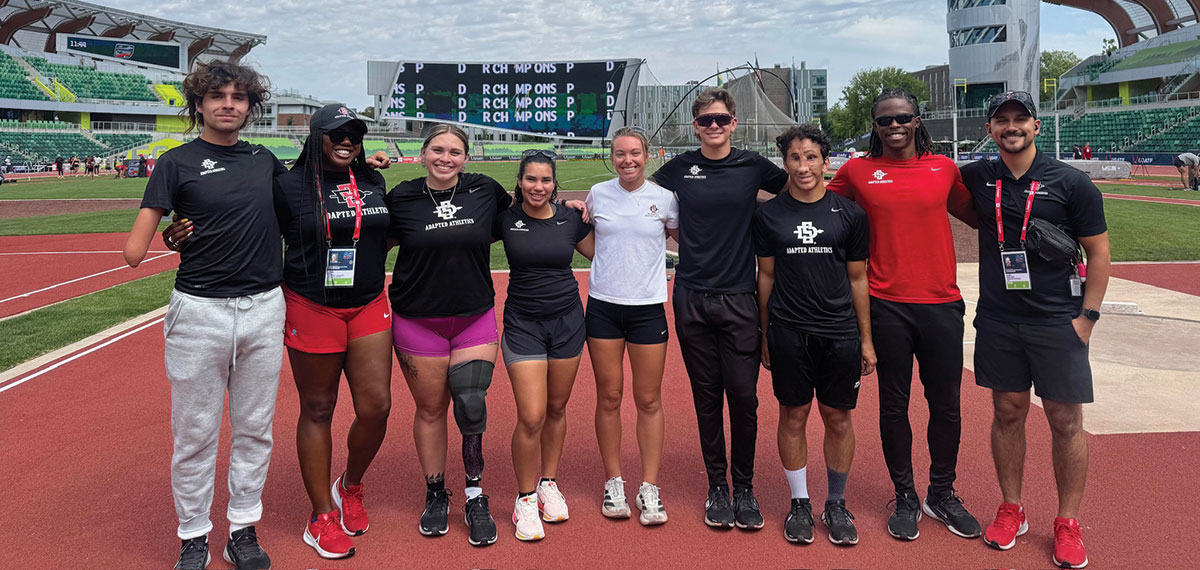Trust & Willpower
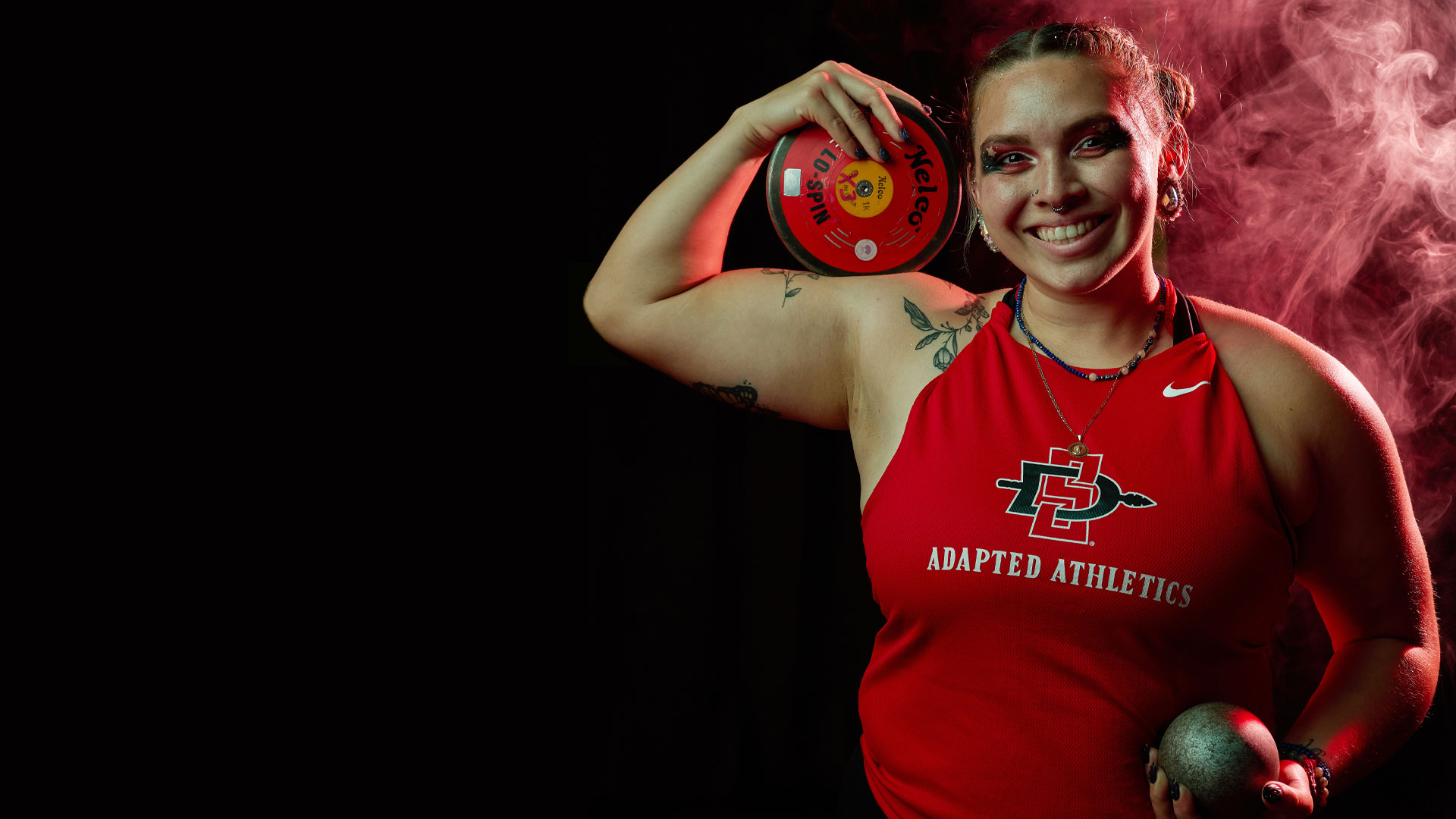
Glitter around her eyes, power in her throw and a coach who believed: Alicia Guerrero is redefining Paralympic potential at SDSU’s Adapted Athletics program.
By Rebecca Nordquist
ALICIA GUERRERO waits in the staging area with her U.S. Paralympic teammates and competitors from Cuba, Mexico and Chile. She is part of the Team USA contingent competing at the 2023 Parapan American Games in Santiago, Chile—and Guerrero, known for her outgoing personality, does what comes naturally to her: She’s cracking jokes, giving high-fives and having fun. She’s also wearing her now signature glitter around her eyes, a declaration that she’s a strong woman and she’s ready to show her magic.
Beneath it all, Guerrero is also nervous—and rightfully so. She’s competing on the world stage for the first time against the best discus throwers in the combined F44 and F64 division. All the other athletes around her also have lower limb impairments, and some, like her, are competing with a prosthesis.
Once competition starts, her throws coach, Jasmine Burrell (’15), calls her over to the tent area. The two have trained together only once before, at the U.S. Olympic & Paralympic Training Site in Chula Vista. The trust between them is still untested.
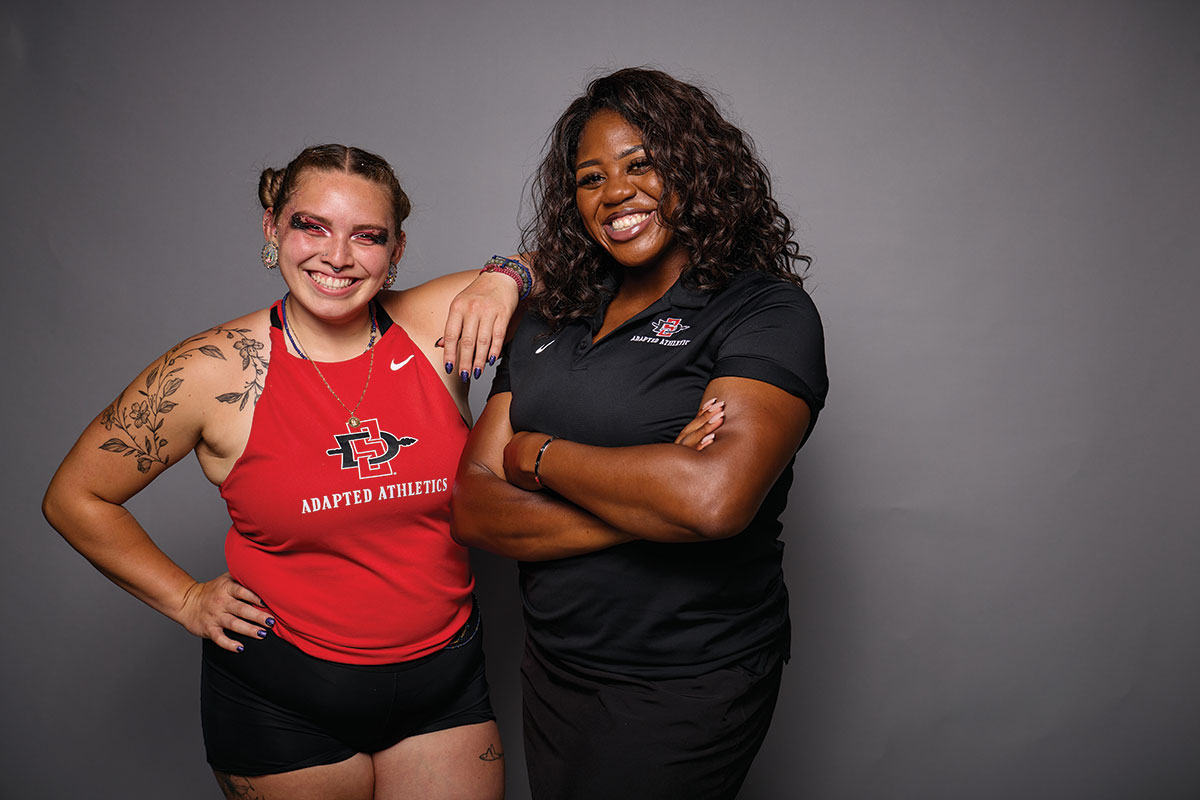
“I’m glad you’re having fun,” Burrell says, “but those girls are not your friends. Those are the people you have to beat. You’re going to go get their medals.”
Guerrero nods, all of her nervous energy quieting.
“When you’re throwing,” coach says, “if you yell and let out a roar, I promise you nothing but good things are gonna come from it.”
The Paralympic hopeful stands in disbelief. How can she yell? Her mom raised her to be humble. Even with her big personality, she doesn’t like to draw attention to herself. Still, she wants to listen to her coach and knows leaving her comfort zone is the only way to become the athlete she wants to be. She is going to trust Burrell: She is going to roar.
The result is a personal record of 29.01 meters and a bronze medal around her neck. It’s also an act of trust that eventually leads her to the Adapted Athletics program at San Diego State University—where, by no coincidence, Burrell is the throws coach.
TEN YEARS AGO, Ahkeel Whitehead (’17), then a sophomore at SDSU, was well into his Paralympic career. The track and field standout held three American records in sprints and one in long jump in the T37 division, a classification for athletes with moderate coordination impairments.
With the 2016 Rio Paralympic Games in his crosshairs, Whitehead trained six days a week with Team USA in Chula Vista, his hometown. That meant access to elite coaching and individualized support like strength and conditioning, and nutritional guidance—resources that didn’t yet exist for Aztecs.
Whitehead soon began to wonder, What if SDSU had a program like this for athletes with disabilities?
At the same time, a movement was taking shape in the School of Exercise and Nutritional Sciences. Professors Antoinette Domingo and Kae McCarty had just started raising funds to purchase sport wheelchairs to support the start of an adapted sports program. They also became advisers to the student club Aztec Adaptive Sports (AAS). Senior Rachel Schlesinger (’15, ’18), now Rachel Cuesta and a lecturer in the College of Education, was one of the club’s first members.
“Our goal at the time was to watch this become a robust program that funnels in local athletes to continue their love for sports in a college setting,” Cuesta says of the club that still runs today.
They couldn’t have imagined then the visionary groundwork they were laying.
Fast-forward to 2016 and Whitehead, fresh from the Rio Games, joined the movement. He soon became the president of AAS and, with the help of many around him, including founding donor Keith Jones and former dean of the College of Health and Human Services Steven Hooker, established Adapted Athletics in 2018 as the program’s first director.
“I was just on an emotional high,” Whitehead says, “so energetically speaking, I thought anything could happen.”
Today, Adapted Athletics, a program of Associated Students, is California’s first—and only—competitive collegiate adapted sports program. Led by director A.J. Munoz-Bond (’19, ’21), it has 20 elite student and community athletes competing in wheelchair tennis and para track and field. And for the first time, three athletes— Guerrero, first-year student Chloe Chavez and community athlete Max Rohn—qualified for the 2025 World Para Athletics Championships, the sport’s most prominent event after the Paralympics.
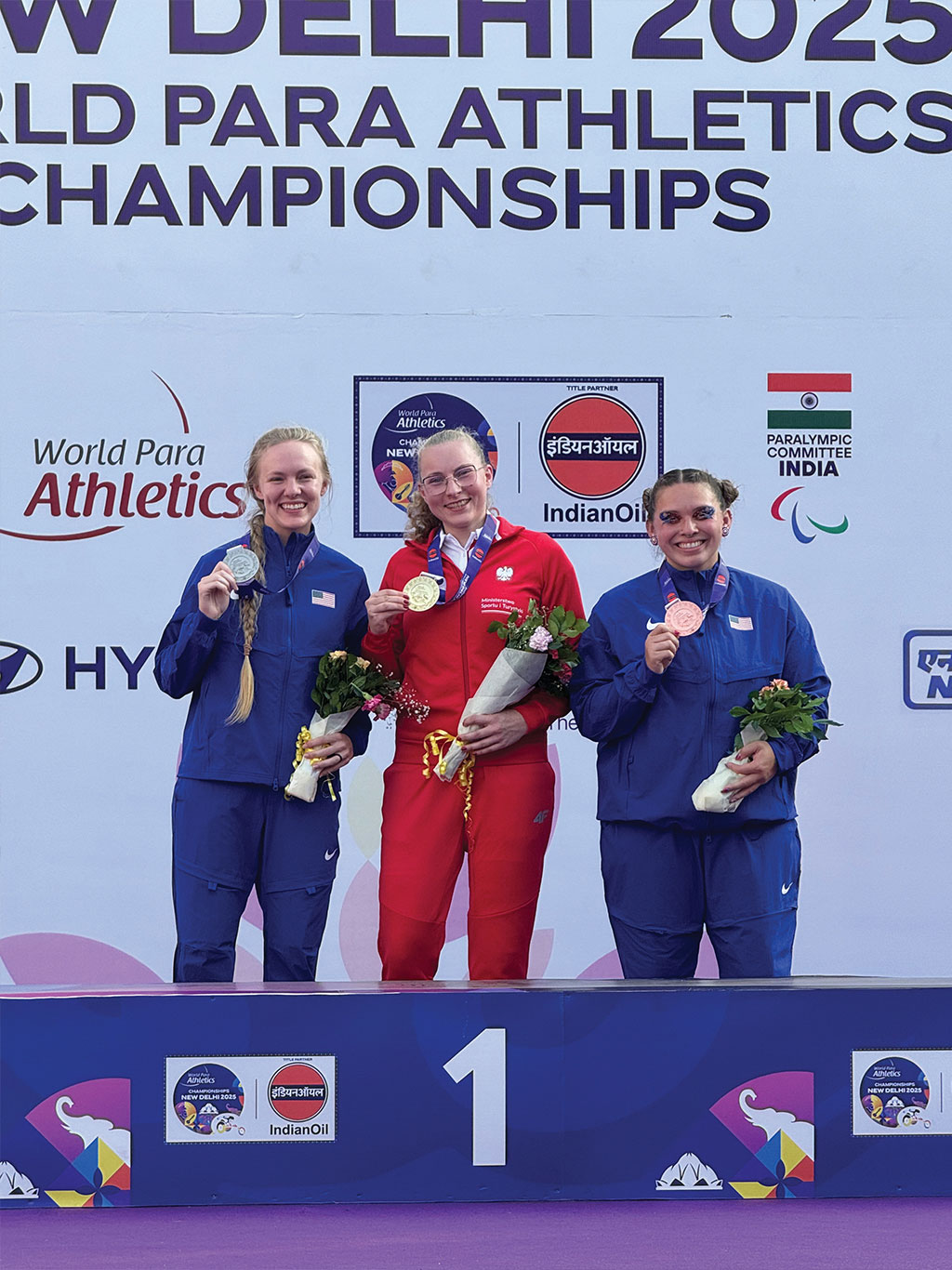
In early October, Guerrero stepped onto the podium twice with bronze finishes in discus and shot put. Rohn earned silver in discus—and while Chavez didn’t medal, she wasn’t far behind the competition.
“What makes me most proud is the intentional culture we’ve built, one that values mindset as much as medals,” says Munoz-Bond, a former master’s student of Domingo’s. “Sending athletes like Alicia, Chloe and Max to the World Championships brings visibility to Paralympic sport, but the real impact is building confident leaders who succeed in sport, in the classroom and in life above all.”
Leaders like SDSU team captain Guerrero.
A YOUNG ALICIA GUERRERO had big dreams of being a ballerina. The toddler could imagine herself twirling in ballet slippers and tutus. She took classes to learn, and after a couple of years, her dreams changed, and she transitioned to gymnastics. Then she joined a basketball team in the second grade. Then volleyball and fast-pitch softball and soccer.
Guerrero was like any other kid, she says, except she was adjusting to a prosthetic after losing part of her leg in a lawnmower accident at age 2.
“The doctors were very encouraging, saying, ‘No matter if she’s missing her leg or not, we want to make sure she’s staying active,’” Guerrero says.
That wasn’t a problem for Guerrero, the youngest of five with four older brothers. And as she progressed as a strong athlete through the years, discovering wheelchair basketball and para track and field in high school, she credits her growing list of accomplishments to the way her parents raised her.
“My dad’s an immigrant from Mexico, and my mom is from Wapato on the Yakama Reservation in Washington,” says Guerrero, who grew up in her mom’s hometown, “and they knew in order to succeed and do what they wanted for us … my dad, as a provider for his family, had to work hard and work up to where he is now.”
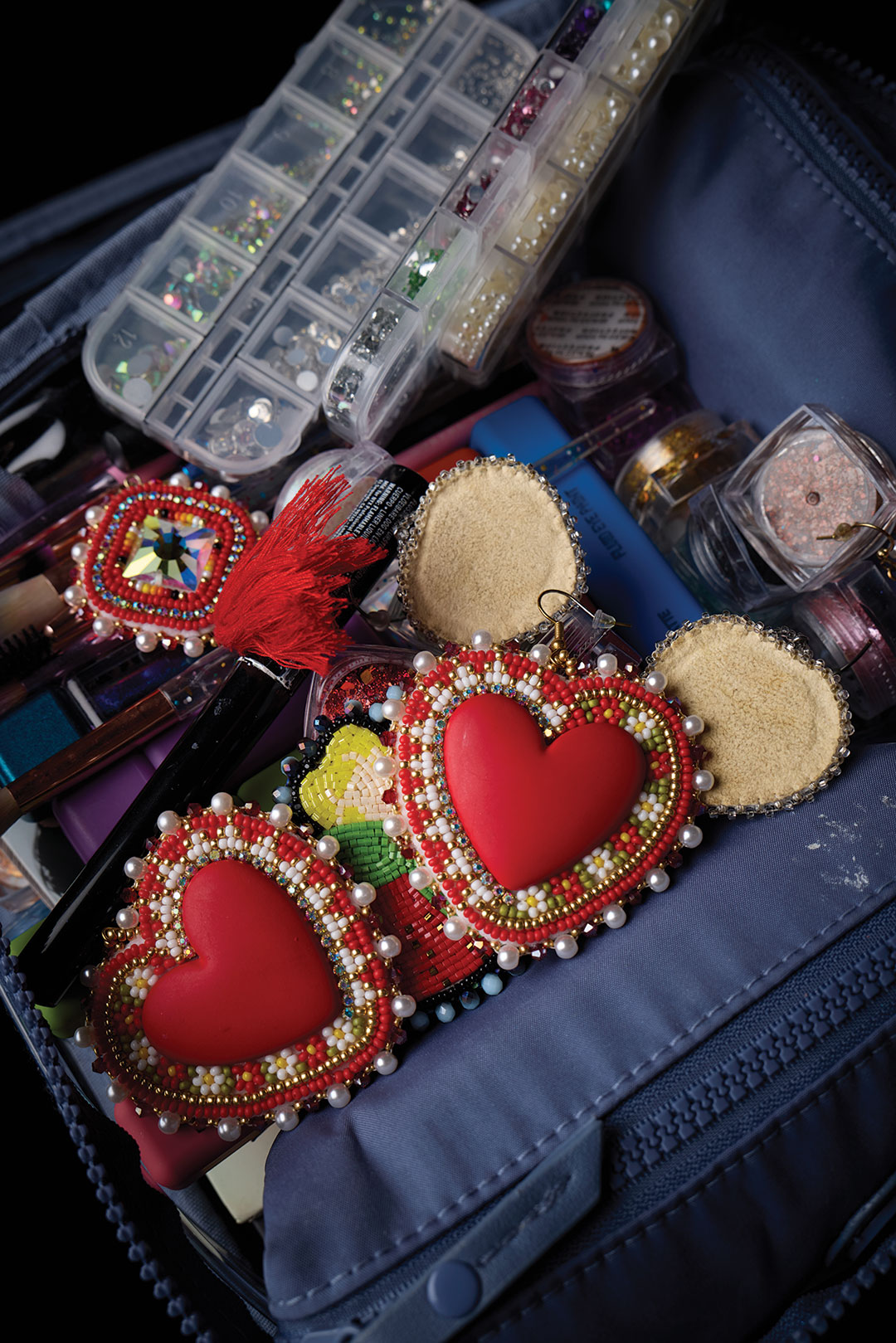
Through the years, Guerrero took notice, and witnessing her parents’ hard work and resolve set her up for a successful future as a student majoring in women’s studies, Indigenous studies and elementary education—and as an elite athlete.
“In a way, this is kind of giving back to them so they know I turned out pretty good and they raised me really well,” she says, emotion rising in her words. “I want people to know that my accident isn’t what defines me. That experience only supports me further—supports my determination in what I want to do.”
It’s a determination that’s served her well.
Guerrero hasn’t let up since that day in Santiago. Now a senior at SDSU, she holds the American record in shot put in her division, and as for world rankings, she’s No. 2 for shot put and No. 3 for discus. Her long-term goal? The LA28 Paralympic Games—and eventually the 2032 Paralympic Games in Australia, a place she’s always wanted to visit. But it’s more than her newfound roaring that has prepared her for the road ahead.
When Guerrero transferred to SDSU from the University of Illinois Urbana-Champaign in 2024, she and Burrell weren’t going to pick up where they left off the year prior; they were going to start from scratch. Not exactly what elite athletes like to hear, but Burrell had one advantage: She had already earned Guerrero’s trust.
Guerrero didn’t touch a discus for a month. Together, they broke down the mechanics of every throw: the stand throw, the half turn, the South African drill and the full rotational throw. Burrell wanted Guerrero, who had always competed with a full rotational throw, to master the half turn first.
“That fall, I had to break her down to build her back up,” says Burrell, who threw for the Aztecs women’s track and field team from 2011 to 2015.
Though Guerrero had confidence in their work, a half turn challenged her identity as a full thrower—and she pushed back.
“I said, ‘I get that,’” Burrell says, “‘but our long-term goal is LA28. Right now, we break it down so you’re ready for that moment’—and she trusted me.”
Soon, with a half-turn throw and hours of focused training, Guerrero eclipsed her full-turn PR—and within a year, she set another PR of 30.10 meters at the 2025 USATF Outdoor & Para National Championships in Eugene, Oregon. Then came the two bronze medals at the World Para Athletics Championships in India.
Guerrero was one step closer to Los Angeles.
U.S. PARALYMPIC ATHLETES in college have a choice. They can train with Team USA, or they can choose to train at their affiliated university. In 2015, Whitehead didn’t have that option, but with SDSU’s Adapted Athletics program, Guerrero did.
Guerrero chose SDSU, a testament to the excellence of the program. It offers her an elite level of coaching with Burrell, strength and conditioning with coach Rodney Fowler, physical therapy with Adapted Sports Physical Therapy—a student-run clinic offered at no cost—nutritional counseling through the SDSU Sports Nutrition Cooperative, and access to the facilities and staffing support through Associated Students.
“Coach Jasmine and coach Rodney are my people,” Guerrero says. “They’re two of the best coaches I’ve ever had. The whole team just does a great job being able to modify these workouts for us to make us successful.
“I didn’t know about San Diego State when I was in high school; otherwise, I would have originally started my path here.”
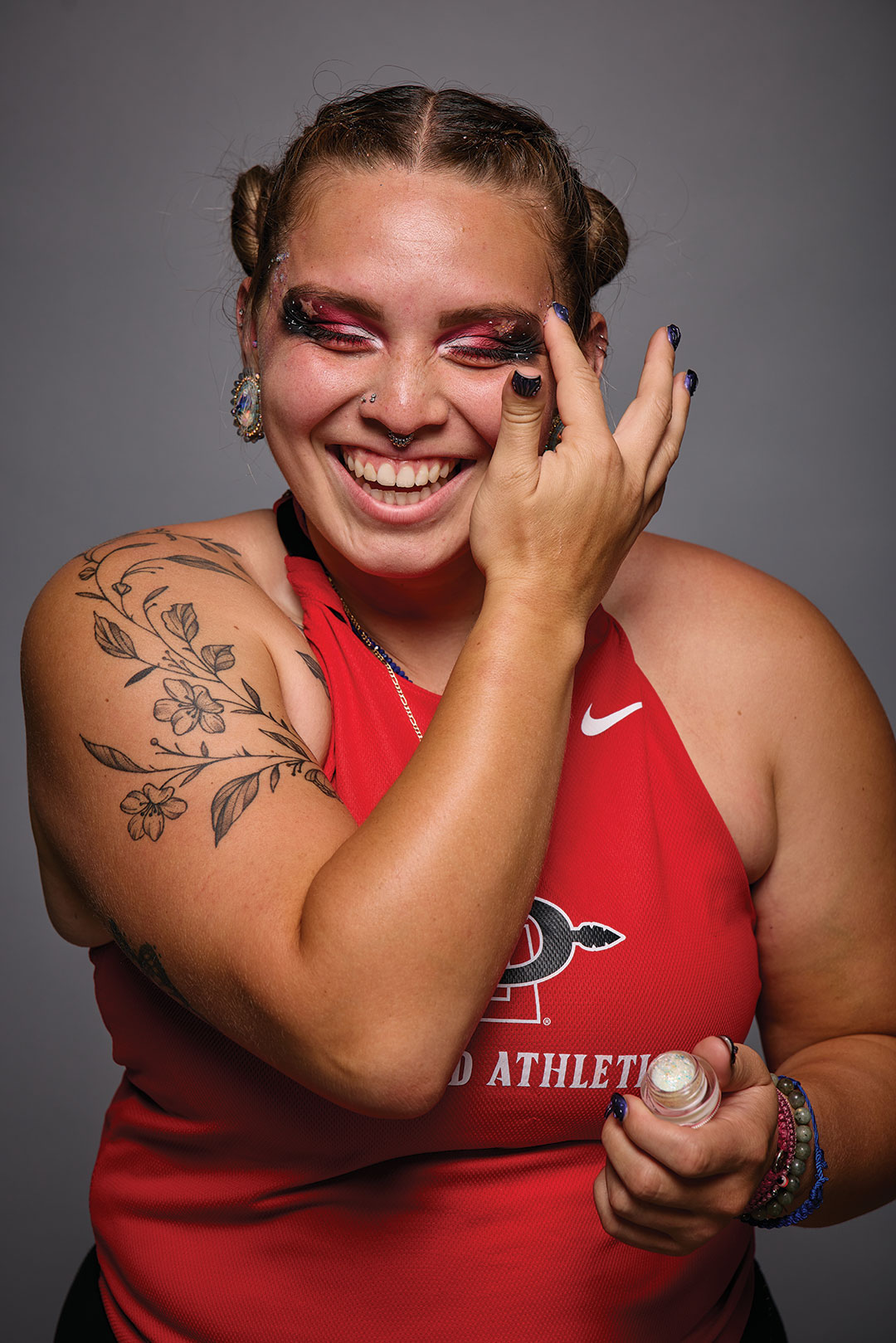
With high-profile athletes such as Guerrero, Chavez and Rohn, SDSU is gaining national recognition. And with the Paralympics coming to Los Angeles, SDSU’s visibility could open the door to even greater student-athlete recruitment.
The Aztecs compete against the University of Arizona—its closest rival—the University of Alabama, the University of Illinois Urbana-Champaign and the University of Michigan. But there’s one more sport Munoz-Bond, the director of Adapted Athletics, has his eye on.
Wheelchair basketball is the most widely played of the big three adapted sports, next to para track and field and wheelchair tennis. It also has a solid infrastructure with intercollegiate competition and year-end championships—a growth area for the other two sports.
With that in mind, Munoz-Bond is working to build a wheelchair basketball team. The obstacle he faces is funding, but Munoz-Bond, like Whitehead, already has a vision for what it would look like.
“Wheelchair basketball has the power to be the gateway sport of our program. It’s fast-paced, physical and one of the most engaging adapted sports for fans,” says Munoz-Bond, who started as a volunteer with Adapted Athletics in 2018. “Adding it at SDSU would not only align us with the strongest collegiate competition in the country but also create the kind of visibility, community support and school spirit that lifts every part of Adapted Athletics.”
And, Munoz-Bond says, it just might be the step that transforms SDSU Adapted Athletics from excelling in two sports to emerging as a national leader.
GUERRERO HAS A NUMBER in her mind: 45 meters. With a confidence that’s been building, she says she’ll throw that distance in discus at one point in her career. The current world record is 42.49 meters, held by China’s Yue Yang for the combined F64 and F44 division—so she and Burrell have a target.
“I told coach Jasmine, ‘What if I were the first athlete in my division to throw 50 meters?’” Guerrero says, upping the ante.
“We can look into that,” Burrell had answered.
The world, and SDSU fans specifically, will be watching.
Mark the Calendar: Adapted Athletics at SDSU
4TH ANNUAL LIFT-A-THON
Nov. 15, 12 p.m.–3 p.m. @ the Aztec Recreation Center
Adapted Athletics biggest fundraiser, the Lift-A-Thon showcases adapted and able-bodied athletes taking on thrilling lifting challenges. To participate or donate, see info here or contact [email protected].
RED & BLACK ALL-COMERS MEET
Dec. 6 @ the Aztrack Sports Deck (on top of Parking Lot 7)
5490 Montezuma Road
An intra-squad competition for both the Aztecs adapted and able-bodied track and field teams. The event is also open to all ages and abilities.
SPRING WHEELCHAIR TENNIS TOURNAMENT
February (check arc.sdsu.edu/events for date as it nears) @ SDSU tennis courts
Hosted by SDSU Adapted Athletics, the event brings competition from other collegiate teams.
ADAPTED SPORTS SHOWCASE
March 6, 2 p.m.–6 p.m. @ the Aztec Recreation Center
5301 55th St.
Stop by for a Paralympic discussion table, an exhibition of wheelchair basketball, resource tables and much more.
AZTEC INVITATIONAL
March 27-28 @ the Aztrack Sports Deck
A track and field meet for both adapted and able-bodied teams. Collegiate teams come from all around the country.
